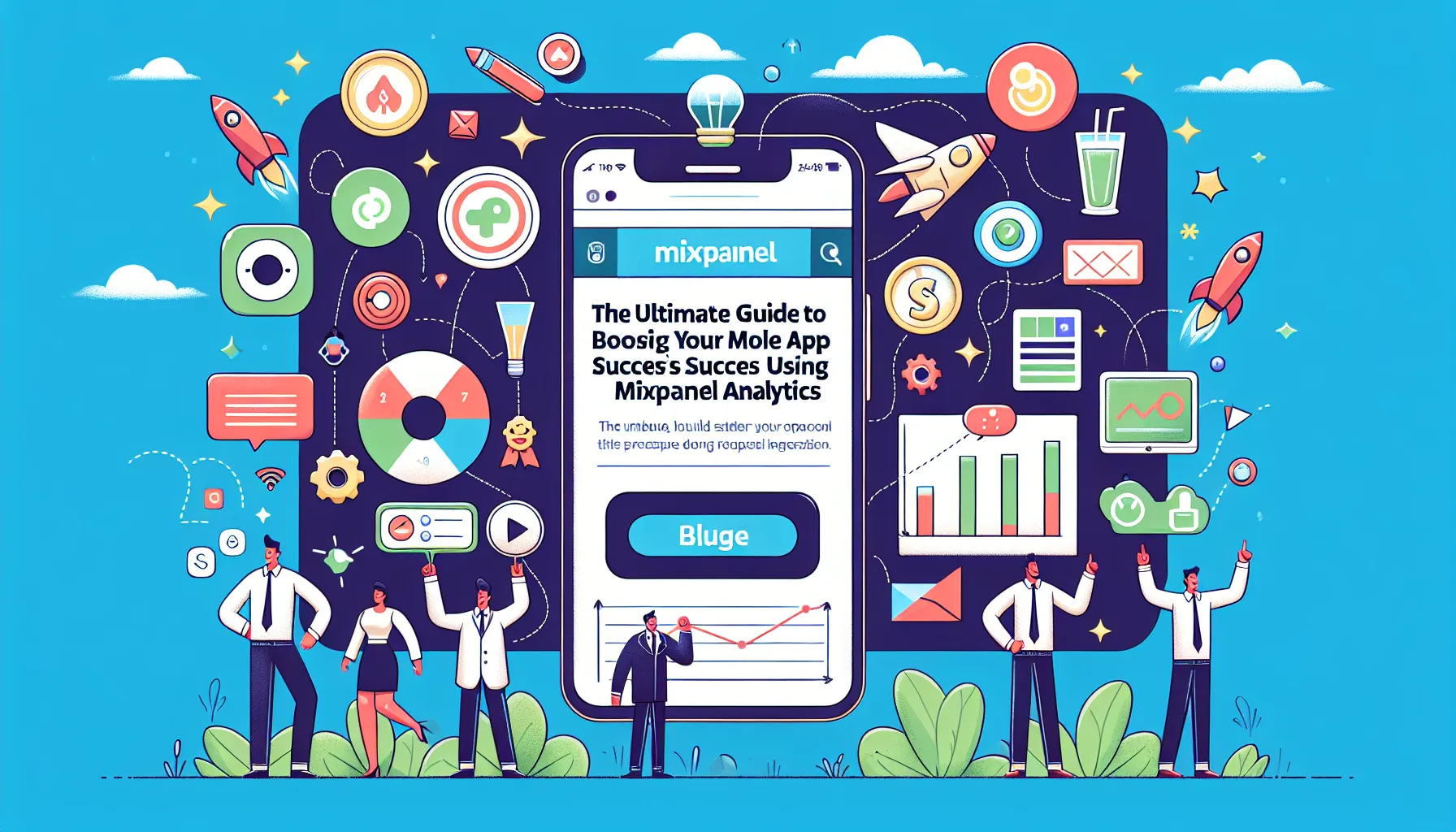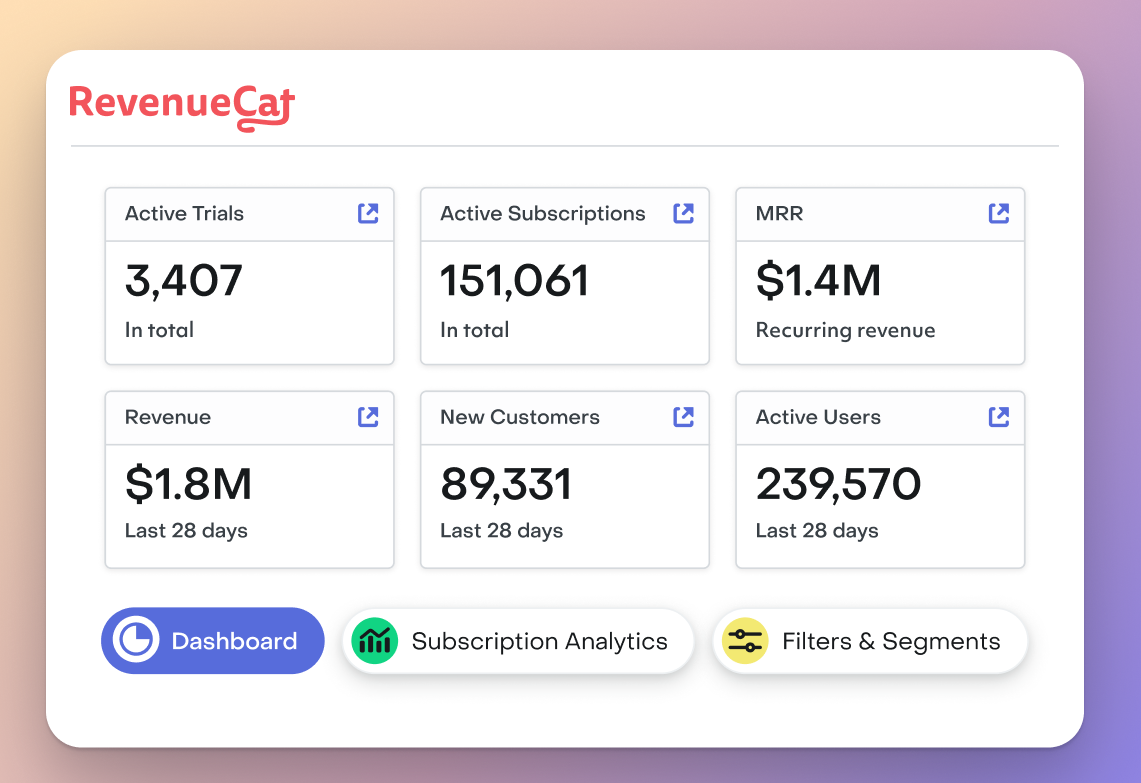Mixpanel Analytics: The Ultimate Guide to Boosting Your Mobile App’s Success
In the hyper-competitive world of mobile apps, flying blind is a luxury no developer can afford. With millions of apps vying for users’ attention spans, understanding exactly how people interact with your product isn’t just nice to have—it’s mission-critical. Enter Mixpanel: the analytics powerhouse that’s redefining how dev teams extract meaningful insights from user behavior.
I’ve spent years implementing analytics solutions for startups and enterprise clients alike, and I’ve seen firsthand how the right analytics implementation can transform a struggling app into a user engagement machine. In this guide, I’ll break down everything you need to know about Mixpanel—from its core functionality to implementation pitfalls, and why bringing in experts often makes the difference between analytics that collect dust and analytics that drive growth.
Introduction to Mixpanel: Beyond Surface-Level Analytics
Traditional analytics have always had a major blindspot: they tell you what happened, but rarely why. Mixpanel flipped this script when it launched in 2009, focusing on something revolutionary at the time—tracking specific user actions rather than just pageviews.
What Makes Mixpanel Different?
At its core, Mixpanel is an event-based analytics platform that helps product teams answer the questions that actually matter: Which features keep users coming back? Where exactly do users drop off in your conversion funnel? Which user segments generate the most revenue?
Unlike Google Analytics, which was built primarily for websites and focuses on traffic metrics, Mixpanel was designed from the ground up for digital products with user retention in mind. It connects disparate data points to individual users through unique IDs, allowing you to build comprehensive profiles and track behavior across sessions.
The platform’s data architecture revolves around two primary components:
-
Events — Specific actions users take within your application (signing up, purchasing, engaging with content, etc.)
-
User Profiles — Collections of attributes about individual users (location, device type, account tier, etc.)
This approach creates a three-dimensional view of user behavior, letting you analyze not just what’s happening in your app, but who’s doing what and why.
Why Mobile Developers Need Specialized Analytics
The mobile ecosystem presents unique challenges that generic analytics tools simply aren’t equipped to handle. When we develop apps at MetaCTO, we’re constantly monitoring how analytics implementation affects app performance, battery usage, and overall user experience.
Mobile users are notoriously impatient and unforgiving. A clunky experience or confusing flow doesn’t just mean lower conversion—it often means app deletion. Mixpanel provides the granular insights needed to pinpoint exactly where users struggle, allowing for targeted improvements rather than speculative redesigns.
The platform shines particularly bright for mobile apps because it:
- Handles offline usage gracefully — Events are cached and sent when connectivity returns
- Manages session tracking intelligently — Critical for understanding true engagement in mobile contexts
- Provides cross-platform user identification — Essential for products with both mobile and web components
- Supports push notification analytics — Letting you measure the effectiveness of re-engagement efforts
How Mixpanel Works: The Technical Foundation
Understanding Mixpanel’s technical architecture helps developers implement it effectively and avoid common pitfalls. Having integrated Mixpanel across dozens of projects, I’ve found that a solid grasp of its fundamentals prevents headaches down the road.
The Event Tracking Backbone
Events are the lifeblood of Mixpanel’s analytics ecosystem. Each event represents a discrete user action and includes three core components:
- Event Name — A descriptive identifier (e.g., “Product Viewed”)
- Properties — Contextual metadata about the event (product ID, category, price, etc.)
- Timestamp — When the event occurred
What makes this model powerful is its flexibility. Unlike rigid, predefined event structures, Mixpanel lets you define events that make sense for your specific product. This means you can track metrics that directly tie to your business objectives rather than forcing your analytics to fit a standardized mold.
Under the hood, the Mixpanel SDK handles the heavy lifting of formatting data, batching events to minimize network requests, and ensuring reliable delivery even with spotty connectivity—a common issue in mobile contexts.
User Identification and Profiles
Mixpanel’s user profiles system turns isolated events into coherent user stories. The platform uses a “distinct_id” to link events to specific users, allowing you to build comprehensive profiles that persist across sessions and devices.
These profiles typically store:
- Basic demographic information
- Technical context (device, OS, app version)
- Custom attributes specific to your business model
- Computed properties like lifetime value or engagement scores
In my implementation work, I’ve found that thoughtful user profiling creates segmentation opportunities that transform generic insights into actionable strategies for specific user cohorts.
The Analytics Processing Pipeline
Once events hit Mixpanel’s servers, they flow through a sophisticated processing pipeline that:
- Validates data against your project’s schema
- Enriches events with additional context
- Processes them for real-time dashboards
- Stores them for historical analysis
This pipeline enables Mixpanel’s most powerful features:
- Funnel Analysis — Tracking conversion through multi-step processes
- Retention Analysis — Measuring how many users return over time
- Segmentation — Comparing behavior across different user groups
- User Flow Visualization — Revealing how users navigate through your product
When implemented correctly, these features transform raw data into strategic insights that drive product improvements and business growth.
Implementing Mixpanel Effectively: Beyond the Basics
Having led analytics implementation for dozens of mobile apps, I can confidently say that the difference between mediocre and exceptional Mixpanel setups isn’t in the code—it’s in the planning.
Strategic Analytics Planning
Before writing a single line of code, smart teams define:
- North Star Metrics — The 2-3 key indicators that define success for your product
- User Journeys — The critical paths users take from acquisition to conversion
- Event Taxonomy — A consistent naming convention for events and properties
- Segmentation Strategy — How you’ll slice your user base for targeted analysis
Without this foundation, even perfect technical implementation leads to data overload without actionable insights. I’ve seen companies track hundreds of events but struggle to answer basic questions about user behavior because they lacked a coherent analytics strategy.
Technical Implementation Best Practices
When it comes to the actual code, several practices separate professional Mixpanel implementations from amateur ones:
- Batch processing — Grouping events to minimize network calls
- Graceful degradation — Ensuring analytics failures don’t impact user experience
- Consistent property naming — Using camelCase or snake_case consistently
- Comprehensive validation — Verifying that events are being tracked as expected
At MetaCTO, we’ve developed a testing protocol specifically for analytics implementation that catches common issues before they contaminate your production data.
Common Implementation Pitfalls
After reviewing countless Mixpanel implementations, I’ve identified several recurring issues:
- Overtracking — Capturing too much data creates noise that obscures meaningful signals
- Inconsistent property naming — Makes analysis needlessly complex
- Missing user identification — Prevents building comprehensive user profiles
- Poor event documentation — Creates confusion about what events actually represent
- Inadequate testing — Results in missing or inaccurate data
These issues compound over time, potentially rendering your entire analytics implementation unreliable and undermining data-driven decision making.
Practical Use Cases: Turning Insights into Action
Mixpanel isn’t just about collecting data—it’s about answering critical questions that drive product decisions. Here are some real-world scenarios where Mixpanel proves invaluable:
User Acquisition Optimization
When integrating Mixpanel with attribution tools like AppsFlyer, you can precisely measure which acquisition channels deliver not just quantity but quality. This allows for:
- Comparing retention rates across different user sources
- Identifying which channels bring users with highest lifetime value
- Optimizing marketing spend based on downstream metrics, not just install costs
One of our clients used this approach to discover that users from their lowest-CPI channel also had 70% higher churn rates, allowing them to reallocate budget to more effective channels.
Onboarding Refinement
First impressions matter, especially in mobile. Mixpanel’s funnel analysis helps identify exactly where new users drop off during onboarding, allowing for targeted improvements:
Onboarding Step | Completion Rate
----------------|----------------
App Install | 100%
Sign Up Screen | 82%
Account Created | 63%
Tutorial Start | 54%
Tutorial Finish | 22%
First Action | 15%
In this example, the dramatic drop between tutorial start and completion immediately highlights where to focus optimization efforts. When combined with Firebase Analytics for cross-validation, these insights become even more powerful.
Feature Prioritization
With limited development resources, knowing which features actually drive engagement is invaluable. Mixpanel helps by:
- Revealing which features correlate with retention
- Identifying underused features that might need improvement
- Showing which features power users rely on most heavily
For mobile app teams using frameworks like SwiftUI and Kotlin, this data-driven approach to feature prioritization ensures development resources focus on changes that deliver measurable business value.
Subscription Optimization
For subscription-based apps using services like RevenueCat or Stripe Billing, Mixpanel offers critical insights into conversion and retention:
- Which features drive subscription upgrades
- When and why users downgrade or cancel
- How trial conversions vary across user segments
- Which pricing strategies maximize lifetime value
These insights allow for continuous refinement of your monetization strategy based on actual user behavior rather than assumptions.
Mixpanel Alternatives: A Comparative Overview
While Mixpanel offers powerful analytics capabilities, several alternatives serve similar markets. Understanding the competitive landscape helps ensure you’re using the right tool for your specific needs.
Hotjar: The Qualitative Complement
Hotjar stands as the most popular Mixpanel alternative, providing user analytics for over 1.2 million websites. Its strength lies in qualitative data through:
- Heatmaps showing where users interact with your interface
- Session recordings capturing actual user behavior
- Direct user feedback through surveys
While Mixpanel answers “what happened,” Hotjar helps answer “why it happened.” Many teams use both tools in tandem, with Hotjar providing the context behind the trends Mixpanel identifies.
Amplitude: The Direct Competitor
Amplitude represents Mixpanel’s most direct competitor, with similar core functionality but different approaches to:
- User journey mapping
- Cohort analysis
- Revenue analytics
- Experimentation frameworks
The choice between these platforms often comes down to specific feature needs, pricing structures, and integration requirements with your existing tech stack.
Firebase Analytics: The Google Ecosystem Option
For teams already using Firebase for authentication or databases, Firebase Analytics offers a seamlessly integrated analytics option. While less flexible than Mixpanel in some areas, its native integration with Google’s advertising platforms and Firebase Authentication makes it compelling for certain use cases.
CleverTap: The Engagement-Focused Alternative
CleverTap combines analytics with marketing automation, focusing on user engagement and retention. Its strength lies in connecting analytics directly to engagement campaigns, making it particularly useful for apps where regular user interaction is critical.
Other Notable Alternatives
The analytics ecosystem includes several other specialized tools:
- Segment — A customer data platform that routes data to multiple analytics tools
- Heap — Automatically captures all user interactions without manual tracking
- Kissmetrics — Focuses heavily on customer engagement and conversion tracking
Each offers distinct advantages for specific use cases and technical environments.
The Integration Challenge: Why Many Implementations Fail
Despite its power, Mixpanel implementation often falls short of expectations. Having rescued numerous failing analytics implementations, I’ve identified several persistent challenges:
Technical Complexity
Proper Mixpanel integration requires expertise across multiple domains:
- SDK Implementation — Correctly integrating the Mixpanel library across platforms
- Event Structuring — Creating a logical, consistent event taxonomy
- User Identification — Properly tracking users across sessions and devices
- Performance Optimization — Ensuring analytics doesn’t impact app responsiveness
- Privacy Compliance — Navigating GDPR, CCPA, and other regulations
Each domain presents its own technical hurdles that can derail an implementation without proper expertise.
Organizational Challenges
Beyond technical issues, organizational factors often undermine analytics success:
- Siloed Implementation — When analytics is seen as “just an engineering task” or “just a marketing concern”
- Lack of Ownership — When no one is responsible for data quality and governance
- Missing Documentation — When event definitions and tracking logic aren’t properly documented
- Inadequate Testing — When analytics implementation isn’t verified before release
These organizational factors can compromise even technically sound implementations.
Data Governance and Privacy
In an era of increasing privacy regulation, proper implementation must address:
- Consent Management — Obtaining and respecting user permission for data collection
- Data Minimization — Collecting only necessary information
- PII Handling — Properly managing personally identifiable information
- Cross-Border Data Transfers — Complying with regional data sovereignty requirements
Mixpanel offers tools to address these concerns through its Data Audit API, but implementing these safeguards requires specialized knowledge.
At MetaCTO, we’ve refined our approach to Mixpanel implementation through years of real-world projects. Our process addresses both technical and strategic aspects of analytics implementation.
Strategic Analytics Planning
We begin every implementation with a strategic planning phase:
- Business Objective Mapping — Identifying how analytics supports your core business goals
- Event Taxonomy Design — Creating a structured, scalable system for tracking user behavior
- User Journey Mapping — Defining the critical paths users take through your application
- Segmentation Strategy — Determining how to slice user data for meaningful analysis
This foundation ensures your analytics implementation delivers actionable insights, not just data points.
Technical Implementation Excellence
Our technical implementation follows industry best practices:
- SDK Integration — Properly configuring Mixpanel’s SDK across all platforms
- Custom Event Tracking — Implementing event tracking that aligns with your taxonomy
- User Identification — Setting up robust user identity management
- Performance Optimization — Ensuring analytics code doesn’t impact app performance
- Testing and Validation — Verifying that all tracking works as expected
Our engineers are experienced with integrating Mixpanel alongside other technologies like Firebase, AdMob, and Azure ML, ensuring a cohesive technical ecosystem.
Ongoing Support and Optimization
Analytics implementation isn’t a one-time project—it’s an ongoing process:
- Data Audit — Regular reviews to ensure data quality and relevance
- Dashboard Development — Creating custom views that highlight key metrics
- Insight Generation — Transforming raw data into actionable recommendations
- Training and Knowledge Transfer — Ensuring your team can effectively use the tools
Through our Fractional CTO services, we provide continued guidance as your product and analytics needs evolve.
Mixpanel offers unprecedented insight into user behavior, but its value lies not in data collection but in data utilization. When properly implemented, it transforms guesswork into certainty, assumptions into knowledge, and reactive development into proactive innovation.
The difference between a mediocre and exceptional Mixpanel implementation often comes down to experience. While any developer can add tracking code, building a thoughtful analytics strategy and implementing it with precision requires specialized expertise.
At MetaCTO, we’ve helped numerous companies transform their approach to analytics, turning Mixpanel from a confusing data repository into a strategic decision-making engine. Our technical expertise ensures proper implementation, while our strategic approach helps convert raw data into business growth.
Ready to unlock the full potential of Mixpanel for your mobile app? Let’s talk about how we can help you implement an analytics strategy that drives measurable results. Our team has the technical expertise and strategic insight to ensure you’re getting maximum value from your analytics investment. Contact our Mixpanel experts today, and take the first step toward truly data-driven product development.




